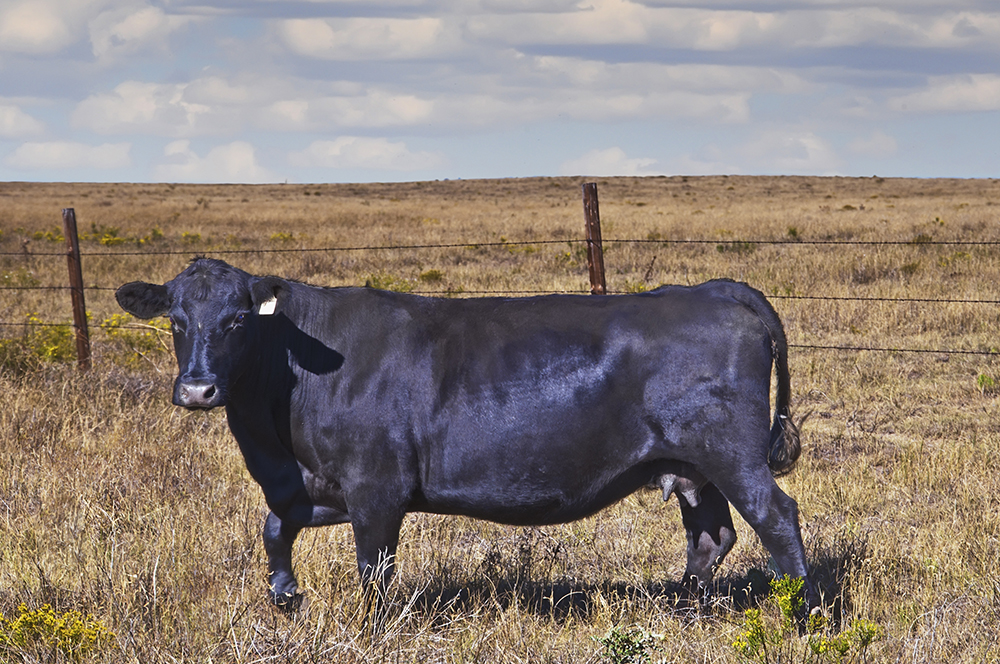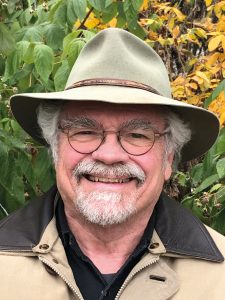Dr Mark Boyce – Adapting Grassland Grazing to Boost Carbon Sequestration
Globally, grassland ecosystems represent a vast, often under-appreciated store of carbon. Sustainable grazing practices offer the potential for maximising the role of these ecosystems as carbon storehouses and biodiversity safeguards. Dr Mark Boyce and his team from the University of Alberta have been investigating how cattle-grazed systems can be adapted to increase carbon storage on the Canadian Prairies. They use the data collected to create protocols for supporting the inclusion of grazing strategies in climate mitigation plans.
Grasslands as a Carbon Store
Grasslands are the most extensive terrestrial ecosystems on Earth – naturally covering 30–40% of the Earth’s land-based habitats. In addition to providing forage for animal production, grasslands deliver a variety of other ecosystem services that are critical to human welfare. These benefits include the capture and storage of atmospheric carbon, making grasslands an important nature-based solution in the fight against climate change.
In fact, grasslands have been surprisingly effective at carbon sequestration, with estimates suggesting that worldwide, these ecosystems hold around 30% of global terrestrial carbon stocks. ‘There is a consistent lack of appreciation and recognition for the value of grassland ecosystems in terms of the vast global carbon storehouse they represent,’ says Dr Mark Boyce, a researcher at the University of Alberta. ‘In southern Alberta and other parts of the Great Plains, grasslands are much more important than forests for carbon sequestration and storage.’
More than 19 million hectares across Canada’s three Prairie Provinces are used for grazing beef cattle. While over-grazing has broadly been recognised as being detrimental to ecosystem services in North America, the condition of rangelands has actually been steadily improving in recent years, and fewer rangelands are now over-grazed. Despite this, livestock production is often regarded as being detrimental to the health of these ecosystems.
However, Dr Boyce points out that many of Canada’s prairie grasslands actually evolved with similar disturbances, such as grazing by wild bison, so the vegetation is adapted to herbivory. In addition, cattle production on Canada’s prairies maintains large amounts of carbon in soils through the avoided conversion of grassland into cropland.
Dr Boyce and his team at the University of Alberta examine how cattle-grazed systems can be adapted to mimic the dynamics of natural bison-grazed prairie grasslands. The researchers also investigate whether the potential of these grazed prairies as carbon stores can be measured and fully utilised.
‘However, there is currently a lack of robust greenhouse gas emissions data and carbon stock data for prairies,’ says Dr Boyce. Indeed, Canada has identified the need to enhance its national emissions inventory reporting methodology for assessing carbon storage in agricultural landscapes. Dr Boyce and his team have collected data to fill these data gaps, towards the development of grazing and agricultural protocols that can help Canada reduce its net carbon emissions, towards a more sustainable future.

Alternative Grazing Systems
As part of their research, Dr Boyce and his team are investigating the role of Adaptive Multi Paddock (AMP) grazing in improving the carbon storage potential of Canadian prairie grasslands. AMP is a modified rotational grazing system in which the management of animals can positively influence ecosystem services. Viewed as a holistic form of grazing, this method attempts to mimic nature to meet the needs of plants, animals and people – sustaining grassland ecosystems and facilitating nutrient cycling. This form of rotational management takes advantage of post-grazing plant recovery and promotes biodiversity by encouraging the growth of desirable plant species.
The net amount of carbon sequestered in Canada’s grasslands remains elusive, particularly under alternative grazing practices such as AMP. With the need to improve Canada’s accounting system on these lands, Dr Boyce and his team focused their research on designing a statistically defensible evaluation of alternative grazing systems. To do this, they measured soils, vegetation and biodiversity on 60 ranches across the grasslands of Alberta, Saskatchewan and Manitoba, collecting data on carbon stocks and accumulation rates, nitrogen concentrations, greenhouse gas emissions, water infiltration, above- and belowground biomass and microbial communities. They compared the AMP approach to more conventional grazing systems.
The team’s findings showed that grasslands with higher plant diversity as a result of adaptive grazing are more effective at retaining carbon throughout the year. ‘As a conservative estimate, AMP management adopted on only 30,000 hectares could lead to the sequestration of over one million tonnes of carbon dioxide equivalents over a ten-year period,’ explains Dr Boyce. ‘If the adoption rate was 100% over the entire livestock grasslands in Alberta (3.3 million hectares), then the hypothetical benefit could be the sequestration of 12 million tonnes of carbon dioxide equivalents over a decade, or 1.2 million tonnes per annum.’
In addition to the carbon storage benefits, Dr Boyce and his team also found that abundance and diversity of specialist grassland bird species are higher in grasslands managed under an AMP grazing system. Grassland birds and plants are in steep decline across the planet, due to cultivation, chemical treatments and agricultural intensification. If managed well, livestock grazing on permanent grassland can sustain habitats for wildlife and native plants – with important implications for conservation.
The team also analysed the surface albedo, or reflectance, of rangelands, under different grazing strategies. This is an important factor influencing the progression of climate change, as landscapes with a high albedo reflect more solar radiation back into space, helping to keep the planet cooler.
Animal grazing can influence surface albedo by changing vegetation composition and altering the soil moisture and temperature. The team concluded that surface albedo may differ based on whether AMP grazing is used, but that longer-term field studies covering the whole growing season are required to determine the exact effects.
‘There is a consistent lack of appreciation and recognition for the value of grassland ecosystems in terms of the vast global carbon storehouse they represent. In southern Alberta and other parts of the Great Plains, grasslands are much more important than trees for carbon storage.’

Developing Protocols for the Future
The research performed by Dr Boyce and his team demonstrates that with appropriate management, cattle on native grasslands can have positive impacts on native ecosystems and vital ecosystem services, such as carbon sequestration. Through the maintenance of large areas of native grassland, the cattle industry can support wildlife habitat and avoid the loss of carbon that occurs with crop cultivation, particularly when flexible management practices are used.
Currently, with few exceptions, the primary revenue from Canada’s grasslands is beef production. Conservation of these lands through policies that provide incentives for landowners to continue grazing grassland ecosystems at moderate rates or using adaptive grazing techniques is key to their long-term maintenance.
Many ranchers in Canada use AMP grazing but do not realise the climate change mitigation benefits they provide, or the expanded benefits that could be achieved if economic incentives were in place that recognised the value of their practices. Dr Boyce’s results show that livestock grazing can be important for climate change adaptation and resilience, yet no protocols to support grazing methods currently exist in Canada. Alongside this, oil companies and other large greenhouse gas emitters in Canada need a large volume of reasonably priced compliance-grade carbon offsets but such offsets are not currently available.
Dr Boyce and his team are therefore using the results of their work to design measurement-based protocols for ranchers to maximise carbon sequestration while conserving grassland ecosystems. These protocols are required so that ranchers can apply for carbon benefits – thereby subsidising grazing practices while simultaneously maximising climate change and conservation benefits.
Existing soil carbon measurement protocols under the Verified Carbon Standard and grassland management protocols under the American Carbon Registry are designed for measuring soil carbon and other greenhouse gas stocks and emissions. Dr Boyce believes that a new Canadian market protocol that incentivises sustainably grazed beef would be of comparable benefit to the Canadian agri-product marketplace.

‘A similar protocol that encourages and monetises when a rancher changes to grazing management practices that enhance net carbon reductions, is what we’re looking at developing for use in Canada,’ he explains. ‘If this is based on a combination of measurement and modelling with enhanced certainty and is accepted by a regulated market, this will greatly improve the net return of carbon value to the rancher.’
Not only could this project have positive implications for beef producers in terms of monetary incentives, but it could also provide benefits for the Canadian beef industry as a whole in terms of improved public perception. ‘If we can demonstrate the reduced carbon intensity of Canada’s beef production by deploying AMP grazing practices, this could enhance public trust in Canada’s beef system,’ says Dr Boyce. ‘Being able to more comprehensively put the socio-economics and science story together could further support and encourage a shift towards climate-friendly beef and restored grassland.’
The result could be a positive feedback loop which leads to further benefits for grassland ecosystems though increased investment in sustainable grazing systems, with significant potential for greenhouse gas reduction.
The work of Dr Boyce and his team has implications for other countries, where similar carbon offset schemes based on grazing strategies could be adopted. Indeed, if the potential of grasslands for carbon storage begins to be recognised on a global scale, the benefits for climate change and biodiversity could be huge.
Reference
https://doi.org/10.33548/SCIENTIA451
Meet the researcher

Dr Mark S. Boyce
Department of Biological Sciences
University of Alberta
Edmonton, Alberta
Canada
Dr Mark S. Boyce was awarded his PhD from Yale University in 1977, and has been based at the University of Alberta since 1999, where he is now a Professor of Ecology. He also holds the Chair in Fisheries and Wildlife endowed by the Alberta Conservation Association. His research focuses on ecological models with implications for conservation. In 2010, he hosted the world’s largest assemblage of conservation biologists in history for the International Congress for Conservation Biology, where participants were taxed to offset the carbon footprint associated with their travel to the conference. Dr Boyce is an editor for PLoS ONE, the world’s largest scientific periodical, and is also author of seven books and more than three hundred peer-reviewed publications. He was awarded the Mirosław Romanowski Medal in 2016 by the Royal Society of Canada for applications of science to the environment.
CONTACT
E: boyce@ualberta.ca
W: https://www.ualberta.ca/science/about-us/contact-us/faculty-directory/mark-boyce
KEY COLLABORATORS
Edward Bork, University of Alberta
Cameron Carlyle, University of Alberta
Scott Chang, University of Alberta
- C. Cahill, University of Alberta
Timm Döbert, University of Alberta
Steven I. Apfelbaum, Applied Ecological Services
Richard Teague, Texas A&M University
Laio Sobrinho, University of Alberta
Bharat Shrestha, University of Alberta
Dauren Kaliaskar, University of Alberta
Jessica Grenke, University of Alberta
Jeannine Randall, University of Northern British Columbia
FUNDING
Agriculture and Agri-Food Canada (AAFC)
Society for Conservation Biology

Creative Commons Licence
(CC BY 4.0)
This work is licensed under a Creative Commons Attribution 4.0 International License. 
What does this mean?
Share: You can copy and redistribute the material in any medium or format
Adapt: You can change, and build upon the material for any purpose, even commercially.
Credit: You must give appropriate credit, provide a link to the license, and indicate if changes were made.
More articles you may like
Dr Norio Mitsuhashi | Measuring Respiratory Motion to Improve Precision in Lung Radiation Therapy
Dr Norio Mitsuhashi, former Professor of the Department of Radiation Oncology at Tokyo Women’s Medical University, leads revolutionary clinical research into optimising stereotactic body radiation therapy for lung cancer. Dr Mitsuhashi and his colleagues examine whether routinely available patient and tumour characteristics can predict respiratory tumour motion, a critical source of uncertainty in high precision radiotherapy. Their findings suggest that respiratory motion cannot be reliably inferred, and must instead be measured directly in every patient.
Professor Terry C. Hrubec | Clean is good – but is too clean better?
Quaternary ammonium compounds are a large class of compounds used as disinfectants in hospitals, restaurants, healthcare and animal care facilities, and are popular as household cleaners. With disease outbreaks increasing our fears about infections, the use of disinfectants has skyrocketed in recent years. Understandably, we all want to feel safe. However, as Professor Terry Hrubec from the Department of Biomedical Sciences of E. Via College of Osteopathic Medicine discovered, such products may be causing more harm than good.
Dr Jan-Hendrik Schöbel – Dr Michael Felderhoff | Greener techniques for the production of pharmaceutical co-crystals through mechanochemistry
Pharmaceutical manufacturers face increasing pressure to reduce solvent use, energy consumption and waste. Mechanochemistry explores mechanical force rather than heat to drive chemical reactions in the absence of solvents, and offers a promising alternative.
At the Max-Planck-Institut für Kohlenforschung in Germany, Dr Jan-Hendrik Schöbel and Dr Michael Felderhoff are exploring how large, industrial milling technologies can be adapted to produce high-value pharmaceutical co-crystals cleanly and efficiently. Their recent studies demonstrate that both drum mills and attritor mills, equipment long used in mining and materials processing, can be repurposed for greener production of ibuprofen:nicotinamide co-crystals.
Professor Richard Ludueña | Two Turkish Cities Were Essential in the Development of Science and Religion – a Work in Progress
This book explores the history of the area in Turkey where these two cities lie. Prof Richard Ludueña and his daughter visited Harran and Sanliurfa (formerly Edessa) in 2014. He found them fascinating and wanted to learn more about their histories, but found no book that focused on their history from the beginning to modern times. So, he decided to write one.
Harran still bears its ancient name, but Edessa has had a great variety of names and is now called Sanliurfa. Our story goes back long before the cities were founded, back to the late Neolithic site of Göbekli Tepe, where monuments have carvings consistent with a destructive comet.




